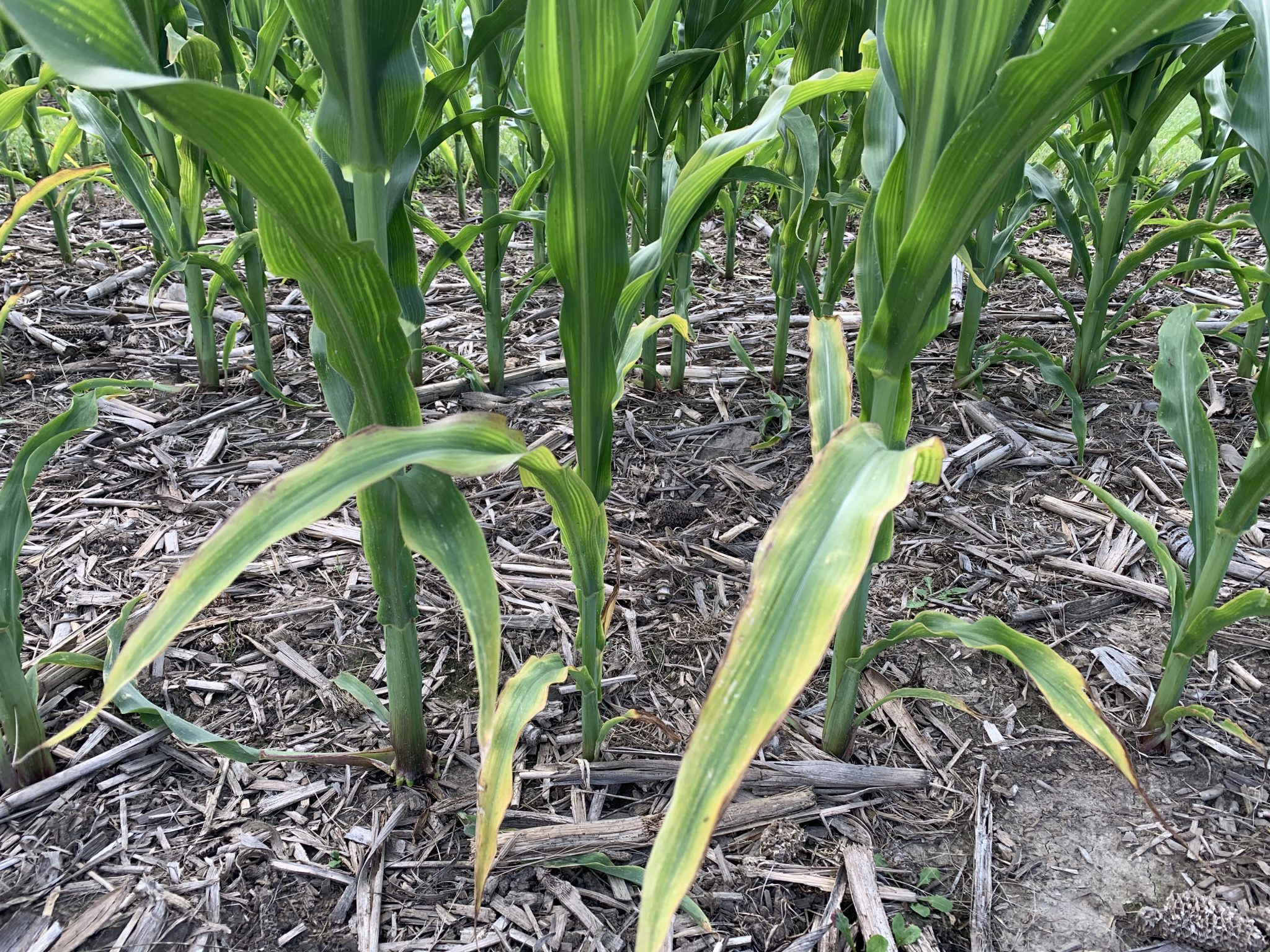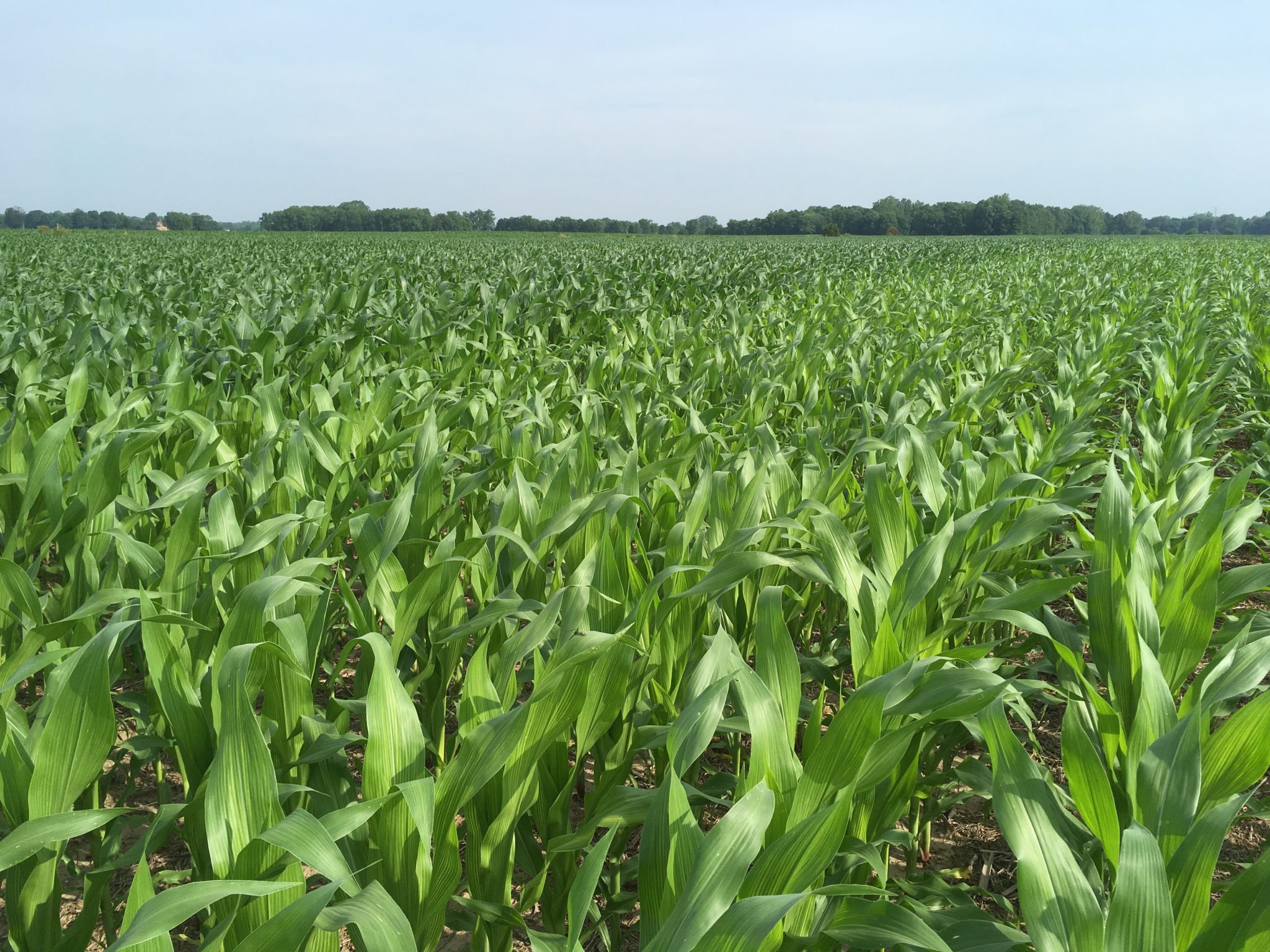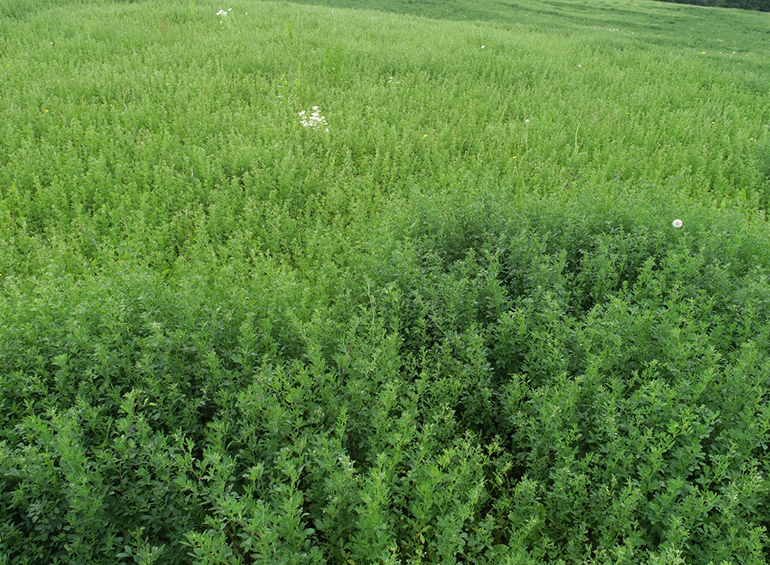
Low soil moisture and compaction slow crop uptake of potassium (K), often resulting in K deficiency.


Low soil moisture and compaction slow crop uptake of potassium (K), often resulting in K deficiency.

Although nitrogen (N) fertilizer can be costly, it is needed to optimize profit in Indiana cornfields. Applying too little N reduces profit by reducing grain yield. Too much N does not return value and can also damage the environment.

Sulfur (S) deficiency has become more common in Indiana with reduction in atmospheric deposition of S arising from coal-fired power plants.

Light green alfalfa in the background of the photo was adequate in all nutrients except S which was 0.14% – well below the critical level of 0.25%.
To facilitate speedy planting between rain showers many growers are skipping starter fertilizer. What might be the consequences?
Ammonium thiosulfate (ATS) is commonly added to liquid nitrogen (N) solutions to provide sulfur (S) to crop plants. Sulfur response trials have shown ATS to be an effective S fertilizer, however, thiosulfate and its first breakdown product, tetrathionate, are not utilized by plants.
This report summarizes corn yield response to fertilizer nitrogen (N) rate in field scale trials conducted around the state of Indiana since 2006. These results are applicable to N management programs that use efficient methods and timings of N fertilizer application.
Results from 97 field scale trials around Indiana since 2008 suggest that maximum yield response to plant populations for 30-inch row corn grown under minimal to moderate stress conditions occurs at about 32,150 PLANTS per acre (ppa), equal to seeding rates of about 33,840 SEEDS per acre (spa).

Sulfur (S) deficiency is becoming more common in Indiana crops because S emissions from coal-fired power plants have decreased over the past few decades and, thus, so has atmospheric S deposition.

Soybeans in Indiana often show potassium (K) deficiency symptoms during seed fill – leaf margin chlorosis to necrosis.
© 2025 Purdue University | An equal access/equal opportunity university | Copyright Complaints | Maintained by Pest&Crop newsletter
If you have trouble accessing this page because of a disability, please contact Pest&Crop newsletter at luck@purdue.edu.